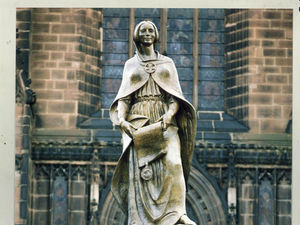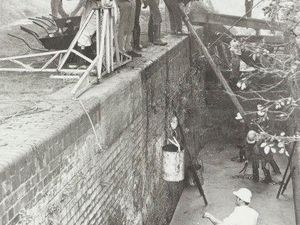Flashback to 2002: Green Goddesses in action in the West Midlands as firefighters’ strike begins
Green Goddesses were responding to emergency calls across the region as the first national firefighters’ strike for 25 years got under way.
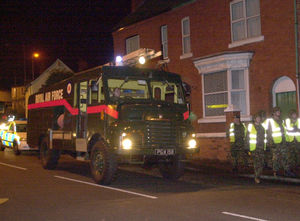
Around 1,600 military personnel had been drafted in to provide emergency cover and man the 40-year-old vehicles.
The appliances – first used in the first UK-wide firefighters strike in the winter of 1977 – were standing in for more than 100 sophisticated fire tenders normally tackling emergencies across the Black Country, Staffordshire and Shropshire. Up to 50,000 firefighters across the country were going on strike in a dispute over pay.
The Fire Brigades’ Union was calling for a 40 per cent pay rise to give fully qualified firefighters a minimum annual wage of £30,000.
As well as Green Goddess machines, stations across the county received back-up support vehicles for the 48-hour walk-out. They were described as BARTs – Breathing Apparatus Rescue Tenders – and RESTs, which were Rescue Equipment Support Tenders.
In Shropshire, nearly 200 full-time firefighters based at the Shrewsbury, Wellington and Telford Central stations were on strike.
Six of the Army’s ancient Green Goddesses were on stand-by in Shropshire ready to respond to emergencies and three temporary fire stations were set up in the county at the Territorial Army centres in Telford and Shrewsbury and at the Army barracks in Donnington.
Shropshire also had military breathing apparatus rescue team and a rescue team equipped with cutting gear. All military support was co-ordinated from Shrewsbury Police Station.
In Wolverhampton, there were seven Goddesses and two BARTS; in West Bromwich, three Goddesses and one REST; in Oldbury, four Goddesses and one BART; in Walsall four Goddesses, one BART and, in Dudley, there were four Goddesses on duty.
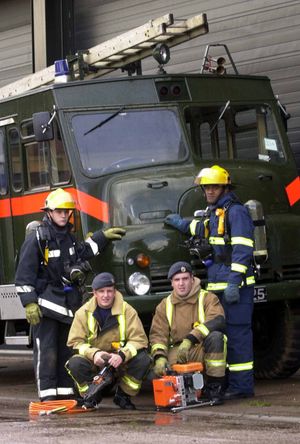
The main fire-fighting centre in Wolverhampton was at Bilston Street police station, where three goddesses were stationed. They were staffed by a battalion of the Welsh Guards who travelled from Germany.
A team of 23 soldiers at any one time were staffing the vehicles, working in 12 hour shifts.
Chief Superintendent John Colston said five police officers were struck off normal duties at any one time to escort the army. Four of these would be working full-time around the clock to escort green goddesses and liaise with soldiers.
Across Staffordshire,14 Goddesses were on standby to respond to 999 calls and crews were based at RAF Stafford; the TA Centre, Cannock, and Whittington Barracks, near Lichfield.
A Goddess and other equipment was also stationed at Kidderminster’s Territorial Army headquarters off Birmingham Road with two crews of seven RAF personnel.
Ahead of the strike starting, Shropshire’s chief fire officer Ian Kerr warned the public to “take responsibility for their own safety”.
“People who haven’t got smoke alarms in their own homes should go out and get them,” he said. “And those who have alarms should make sure they have batteries and that they are working. People should also draw up a plan to ensure they can get out of their homes safely if a fire occurs. Most of Shropshire will more or less have a normal service but within the urban areas or Shrewsbury and Telford, where most calls are received, the service will be very much reduced.”
Companies across the region were making their own final preparations, checking their own firefighting equipment was up to scratch and reviewing emergency procedures to ensure staff were not put at risk during the strike.
Councils also had to make decisions to ensure safety of their staff and tenants, with some authorities choosing to postpone certain repair work for the duration of the action to lessen the risk of sparking fires.
As fire crews were called to dozens of lift-rescues every week across the region, authorities were also faced with the choice of warning residents not to use such equipment in tower blocks and offices, or training staff to be able to operate the lifts in case of problems.
Schools were told to stop using bunsen burners in science lessons.
At 6pm on November 13, firefighters across the country emerged from their stations at 6pm to begin a 48-hour picket.
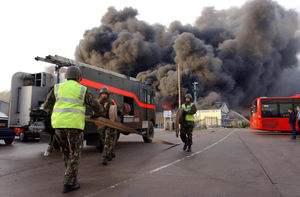
Minutes later, Green Goddess appliances started responding to emergency calls – most minor and some false and hoax alarms.
On the first night, all areas of the country were hit by an unusually large number of false calls and police officers warned those responsible they were putting lives at risk.
Three hoax calls from the Telford area were answered by Shropshire’s deputy chief fire officer, Gerry Scutt, at the emergency operation centre in Shrewsbury.
“It was disappointing to have received false alarm calls,” said Mr Scutt. “When the fire crews attend these locations it increases the danger when they could be required for a life-threatening incident elsewhere.”
A Green Goddess was also sent to a answer a call in Stourbridge, which appeared to be a hoax. A car was reported to be on fire but when the crew arrived they found no car there.
The problem of bogus calls was worst in Scotland, with more than 230 false calls during the first three hours of the strike.
A spokesman for the Army said he was surprised how many hoax calls the temporary firefighters had been receiving.
Up and down the country, there were many reports of firefighters leaving their picket lines to offer help and assistance to the Army at major incidents.
The November 13-15 strike began a series of walk-outs, totalling 15 days.
In June 2003, the nine-month dispute came to an end after union officials agreed a final deal worth 16 per cent over the course of two-and-a-half years.


